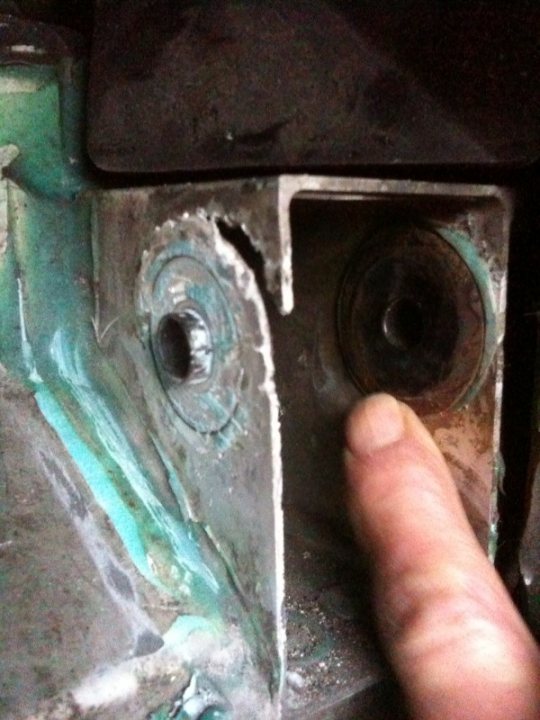PLEASE don't think that substituting stainless steel for mild steel is a solution.
As owners found out with the stainless steel side mirrors what happens the is that the Aluminium becomes the sacrificial anode and that turns to dust instead.
Warning to all elise/exige/europa owners/potential owners - Page 1 - Elise/Exige/Europa/340R - PistonHeads
Monday 21st December 2009


Guys
just as a warning, get this checked as soon as possible and talk to your dealers, the front suspension mounts on your car may well not be safe
When lotus built the elise and subsequent models they chose to use steel wishbones and to adjust the suspension steel washers as spacers, this is a practice no other manufacturer of aluminium cars has used, all going to aluminium suspension components
The steel washers rust when wet this then sets up an electrolytic reaction with the ali in the chassis, this causes the suspension mounts to corrode, this is most obvious at the upper mounting where the aluminium is thinnest, which results in what has happened to me, the suspension mounting point fails, at the edge of the mounting bush

This is not just one side, when they checked the other side they found the same problem. For reference i am the only owner of this car, it has never been crashed or even tracked.
The chassis is not repairable, so when this happens your car is dead, unless you want to spend 5k on a new chassis and the time and expense of changing all the components over, which will cost more then the car is worth, so not cost effective. If you just replace it, the replacement will have the same potential problem.
This is of coarse worse when the car gets wet, but the suspension mounts are exposed so they're the first to get wet and the last to dry out, i would be amazed if anything short of keeping it in a heated dehumidified garage would keep them dry.
Lotus of coarse have washed their hands of the problem, the cars are too old, they have your cash now, it's not their problem, they seem unwilling to explain the use of materials and why their own advice about the contact between steel and aluminium as outlined in the handbook has been ignored
The result of this, is that the unrepairable chassis is in effect a consumable product, when the suspension points have corroded the car is gone
The suspension point ripping out is a common cause of the cars being written off, the question that must be asked is if these failed because they had already partially corroded converting what would have ben a repair into a write off. The mounting points themselves are under most load when cornering, if they failed pre crash, the change in geometry may well be the cause of the crash itself.
I would implore you to get the points checked at your dealers, and to at least change the washers, the bad news is if the corrosion is there, there is nothing else that can be done, despite a repair solution being offered to lotus, they have decided it would not be safe, as you can't have stainless steel and ali in close proximity ( except when they do it, with mild steel)
If you are looking at buying one, get this checked beforehand as it dwarfs head gasket or any other problems, sorry but this is going to have a serious effect on used values. Mine is 11 years old, but knowing what I know now i wouldn't touch one that was 10 years old or older, and i would seriously question buying one more then 5 years old
I think the fact they they seem to have been aware of this, but choose to use mild steel rather then stainless steel washers on the suspension destroys any myths about "lotus engineering" this is a case of them saving a few pence per car....






